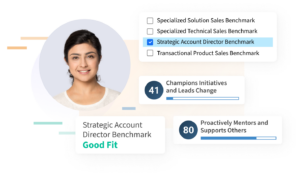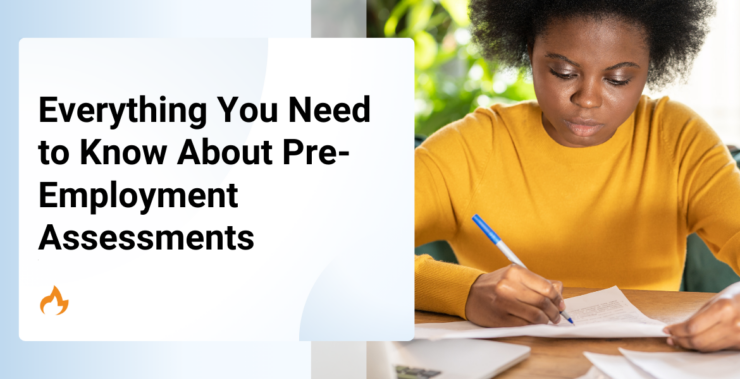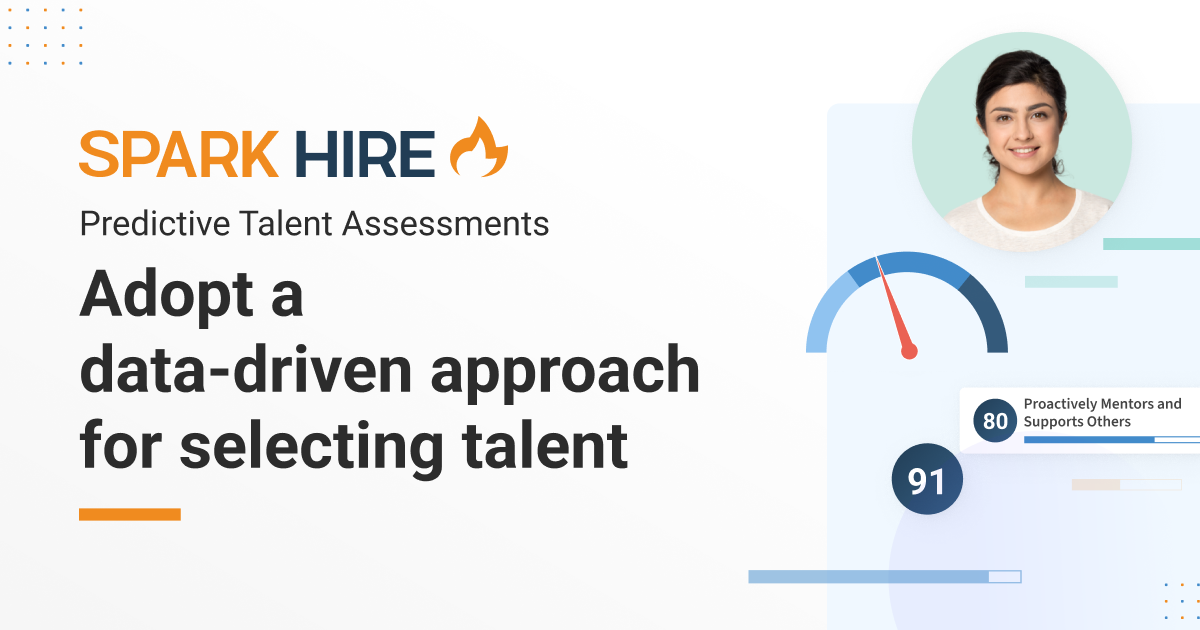While pre-employment assessments are trending, their goal in the workplace is old news. So old, the process dates back to the Han Dynasty (206 BCE – 220 CE). Much like we currently use standardized tools to measure a candidate’s skills, intellect, personality, and other defining characteristics, Imperial China tested young men to enter the bureaucracy.
We’ve moved well beyond three-day essay tests in complete isolation to standard writing tests and finally intuitive digital assessments. In fact, pre-employment assessments of the 21st Century produce scores, ratings, descriptions, and categories recruiters trust to make crucial job-fit decisions every day.
To help you better understand the significant transformation of pre-employment tests, we’ve turned back time just over 100 years. Take a brief tour through the evolution of the assessment processes you rely on today and learn more about the top tools currently on the market.
Here’s everything you need to know about pre-employment assessments and how to effectively combine them with video interviews as an invaluable part of your recruitment strategy:
The evolution of candidate assessments
WWI
Robert Yerkes, president of the American Psychological Association (APA), performed intelligence tests on Army recruits. Depending on the score, recruits were either placed in Army Alpha (literate) or Army Beta (illiterate).
Post-WWI
The success of Yerkes’ assessment caught the attention of others wanting to reap the financial rewards of performing assessments. They came in the form of unscientific and uncontrolled methods, such as palm readings and head sizes.
WWII
Before WWII began, the APA intervened to debunk these unfounded methods and reclaim the accuracy of genuinely effective and scientific assessments. This was done just in time for WWII when others developed even more effective tests:
- Wonderlic Contemporary Cognitive Ability Test: Designed by E.F. Wonderlic, this was the first short-form cognitive abilities test. The test earned its fame by helping the Navy select candidates for pilot training and navigation.
- The Cardall Test of Practical Judgment: Alfred Cardall created this situation judgment test, the first of its kind, to measure everyday life problem-solving abilities.
- The Briggs Myers Type Handbook: Mother-daughter team Katharine Briggs and Isabel Myers created this personality assessment based on the C. G. Jungs Theory that people generally engage in one of two mental functions: judging or perceiving.
Pre-employment assessments caught on in the mainstream workforce after WWII. But the concern of test-related bias quickly came to light, specifically after the Civil Rights Act was passed in 1964. In 1971 the Supreme Court established specific guidelines for pre-employment assessments in Griggs vs. Duke Power.
The ruling concluded that selection tests must be job-related and based on specific qualifications. If an adverse impact occurs, such as test results purposefully score protected groups lower, the company must prove the test is job-related.
Today’s pre-employment assessments
 From paper to phone to present-day digital, pre-employment assessment tools have evolved in every way possible. The digital transformation has put these powerful tools in the hands of 63% of hiring pros who currently use them in their process, according to the Global Assessment Trends Report. Of those assessments, 89% are delivered online.
From paper to phone to present-day digital, pre-employment assessment tools have evolved in every way possible. The digital transformation has put these powerful tools in the hands of 63% of hiring pros who currently use them in their process, according to the Global Assessment Trends Report. Of those assessments, 89% are delivered online.
The majority of hiring pros (58%) in Talent Board’s Candidate Experience Report say they use pre-employment assessments to measure job-specific skills. They’re also using tests to measure ability/cognitive (46%), personality (44%), competency (43%), work simulations (36%), and perhaps the newest test on the recruitment scene, cultural fit (36%).
As you can see, pre-employment assessments have many purposes and fulfill many needs. However, because your company has varying needs across many different departments and teams, it can seem overwhelming to find one assessment for your specific needs.
The good news is, that many pre-employment assessment tools today take into account the vast amount of information recruiters need to consider when screening talent.
Combining assessments with video interviews
Increased technology in the recruiting process has the power to improve the candidate interview experience or send it spiraling. Even still, Talent Board’s previously-mentioned report revealed over 71% of employers use pre-employment assessments and selection tests during the interview stage.
When using pre-employment assessments, the candidate experience is impacted by what assessments you perform, when you perform testing, and your next steps. For example, 61% of Talent Board’s Candidate Experience Award (CandEs) winners explain to candidates why they’re using specific assessments during the application process.
Combining smart technologies during the interview process increases your ability to quickly, consistently, and transparently evaluate talent. There’s been a 10% rise in video interviewing with assessments according to Talent Board’s report. In fact, 43% of CandEs winners use video interviews with their assessments.
Additionally, more than half (52%) of CandE winners say they use pre-employment assessments and have conducted an in-house validation analysis to offer a degree of objectivity and fairness to candidate screening. Candidates experience a more personal early assessment with a unique opportunity to reveal more than what will show on a resume or during a phone screen.
Pre-employment assessment results remain critical well after the initial candidate screening process. Hiring pros compare assessment results against various stages of their interview analysis to determine how well a candidate will perform in a role and as part of the team.
During final hiring rounds, these same assessment responses can guide job-related interview questions. For example, if a personality or behavioral assessment score reveals the candidate struggles with confrontation, an interviewer may ask them to detail how they’d handle a specific scenario with a co-worker.
As history reveals, pre-employment assessments hold incredible power. For centuries, they’ve determined immeasurable skills, personalities, and traits to predict how candidates will perform in a countless number of roles and industries as part of an already established team. With so many possibilities, you must understand where assessments will positively impact the entire hiring process before implementing them in your recruiting strategy.
This post was last updated on 3/38/24










